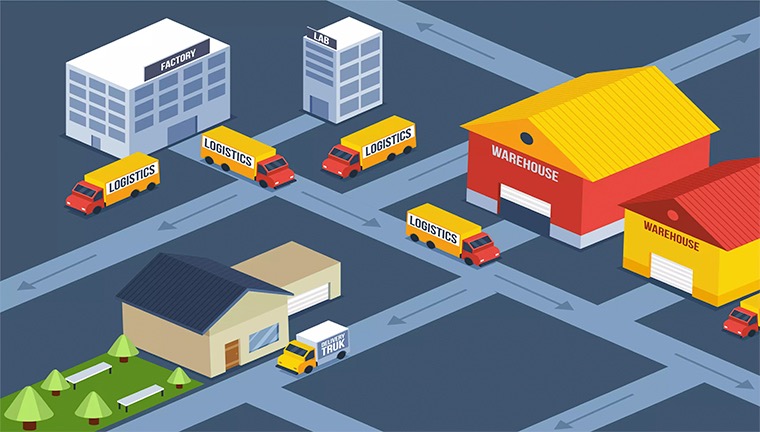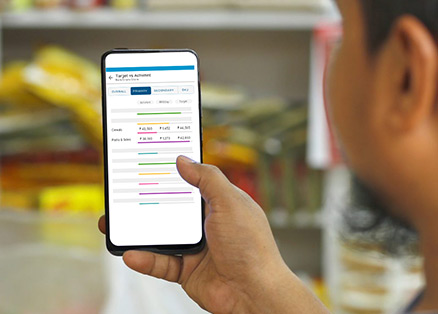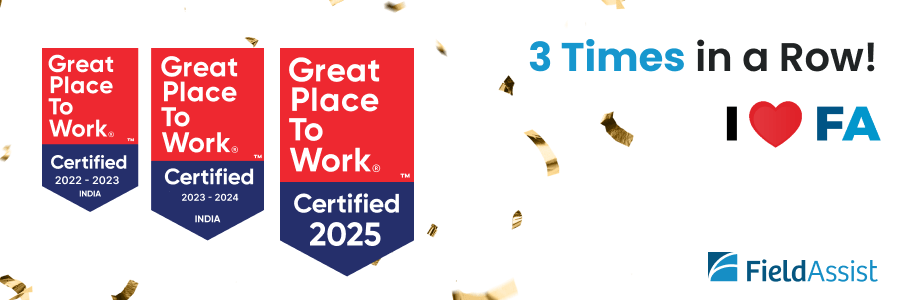Whenever we go meet customers or attend networking events or conferences, the one question that gets tossed up most of the time is this:
“Can we monitor our salespeople in the field without making them feel that we are tracking their every move?”
Our answer is, “You are tracking activities, not people.”
In 2024 it has become critical for small FMCG businesses and emerging CPG brands to track on-field sales activities. In the past, capturing retailer orders in notebooks was enough as there wasn’t much competition. But today, especially after 3 seasons of Shark Tank India, all small brands dream of becoming big. Competition has become intense, and brands need real-time clarity on how their products are performing in the retail market. That cannot happen if retail orders continue to be documented in a notebook and it takes 2 working days to analyze all that data. This process is also tedious, manual error-prone.
For a founder and sales head of an SMB consumer goods company, using a sales tracker gives them the ability to track sales activities in the field in real-time and centralize the data quickly. Many brands are happy with just a tracker, but is that enough to be competitive? Wouldn’t you rather have a ‘sales enabler’ that not only monitors sales activities but also becomes a ‘source of truth’ to craft your GTM, improve your field performance and respond to the market dynamics in real-time?
Think of a sales enabler as a dedicated, 24/7 accessible ‘GPS for Sales’. Just the way a GPS helps you navigate from Point A to Point B, a sales enabler, also known as sales force automation, helps your brand understand where you have been, where you need to reach, and how to get there.

Would you choose a Sales Tracker or a Sales Enabler?
A sales tracker is a software tool or platform that CPG and FMCG companies use to digitize, monitor and control sales activities in the field. Typical sales trackers only capture real time information and offer minimal or no insights on the data collated.
A Sales Enabler is a software solution that automates your sales processes and often uses an AI-powered architecture to provide data-based insights. It could be anything from sales volume, number of outlets visited, active salesmen in the field, categories sold, number of productive outlets, average ticket size to which territories are selling better, which are the performance red flags etc. AI powered solutions – like FieldAssist FA App, also factor in historical patterns to intelligently suggest smarter Routes or improved Product Assortment etc. Such Sales Enablers help businesses understand how well their products are performing in the market, how to improve overall sales performance and how to tap into the current trends in consumer buying behaviour.
The Need for a Sales Enabler in a Digital World
Quite a few Micro, Small and Medium – SME FMCG companies like to use Excel sheets to capture sales data. In the early days of a company’s evolution, it might suffice. However, in today’s age when there are more than 12 million retail outlets, and products of 30,000 small and medium FMCG brands cater to 80% of the population, working on old-world technology can prove to be hugely counter-productive.
Here are some of the key features that empower businesses to create a data-led decision-making culture
Features that enable not just SME Sales Tracking but also Sales Enablement
Validation of outlet visit: The Geo-fencing feature, available in most sales tracking softwares helps authenticate every outlet visit. It should also allow you to do live-tracking of salesmen’s activities throughout the day e.g. how many outlets visited, average time spent per outlet, number of leaves, meetings etc.
Smart Order Booking: For a fast growing SMB FMCG brand, not getting the on-field strategy right can make or break the company. If your brand doesn’t know which retailer buys which products or which Sales Officer is covering less than 60% outlets in his beat, you will lose market very quickly share. With a plain-Jane sales tracker you can punch in orders easily. But a sales enabler will do much more like punch an order within minutes, nudge the salesman to push other categories based on historical data, share relevant retailer schemes etc. A full service sales force automation tool like the FA App from FieldAssist also allows remote order booking- letting your salesman punch in orders remotely using the Telephonic Order module without doing a market visit. Not only that, the salesman can also share the same orders with the distributors to ensure uninterrupted fulfillment.
Automated Attendance Management: A KRA-based attendance policy can create transparency for the salespeople in the field and minimize attendance reconciliation issues. E.g. you can define KRAs and workflow policies for your employees such as Total Outlet Visits or Time of First Outlet Visit to encourage higher discipline and productivity. Small manufacturers and emerging brands in Gujarat, Delhi Chennai are very particular about salespeople starting their day on time, hence look for this feature when choosing a sales tracker.
Route Optimization: Some full-suite sales enablement solutions like the FieldAssist FA App, allow you to create customized route plans based on key KPIs such as category sales, LPC, and historical sales so you can drive market expansion plans and optimize each outlet’s serviceability.
Visibility on Active Schemes & Promos: With a salesforce automation app on their smartphone, your on-field sales team can activate schemes, discounts and coupons anytime on the field to build retailer loyalty and ‘stickiness’ in real-time.
Primary Order Module: Not all sales trackers offer this feature, but if you choose one that does, this can be a game-changer. With this, you can empower your sales team to capture or place primary orders with a distributor anytime, anywhere on-field. With access to primary orders, your sales leaders can proactively review inventories to avoid stock dumping or stock-outs. For small manufacturers and emerging brands in Delhi, Chennai and Gujarat, the primary order module has given them so much visibility on the overall inventory in the market that they have now transformed their inventory planning and forecasting into an art!
Benefits of Using A Sales Enablement solution for Emerging Companies
- Greater compliance & productivity: Sales Enablement platforms keep a close eye on a salesman’s activities in the field, like starting his beat on time, the number of outlets visited per day, selling across categories, meeting distributors etc.
- Assessing market penetration: A sales tracker does not show you a category-wise universe of the number of active retail outlets in your captive areas. A sales enabler can show you active outlets (that have placed at least 1 order in the past 3 months) of Tier-1 and Tier-2 cities and towns to help you understand how well your products are penetrating the market region-wise, category-wise, revenue-wise, SKU-wise etc.

- Improved sales performance: By analyzing historical data, sales leaders can spot trends and patterns in consumer behaviour as to what products are in demand, when, and where. With this data available on their smartphones, your SOs (sales officers) can help retailers place orders smartly by giving them personalized insights on what to order and how much.
- Competition Analysis: Sales tracking tools with sales enablement capabilities also help you monitor how your brand is performing against competitors, and identify places where you can gain a competitive edge.
- Forecasting: A good sales tracker which has evolved into a sales enabler like the FieldAssist FA App gives you historical data e.g. year-on-year, month-on-month and last 3 months comparisons. This helps brands make calculated decisions about their GTM strategy, inventory management, and marketing strategies.
About Post Author
Rashmi Kapse
Rashmi is a Content Specialist at FieldAssist. After spending 11 years in the Executive Search business she decided to change tracks and follow her passion for writing. For the past 8 years, she has been writing on Sales Tech, HR Tech, FMCG, Consumer Goods, F&B and Health & Wellness.
















